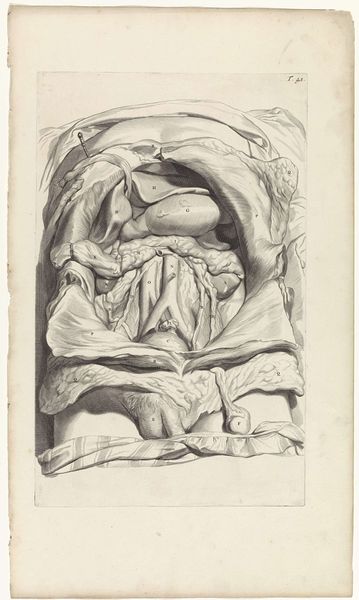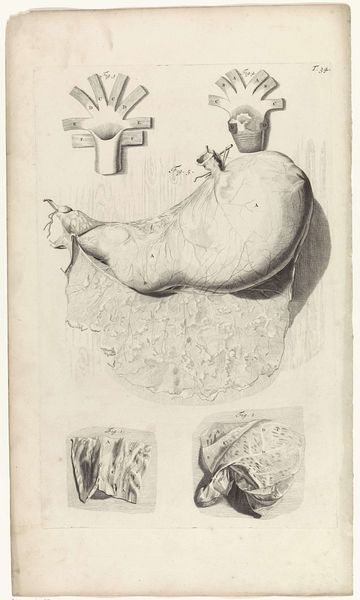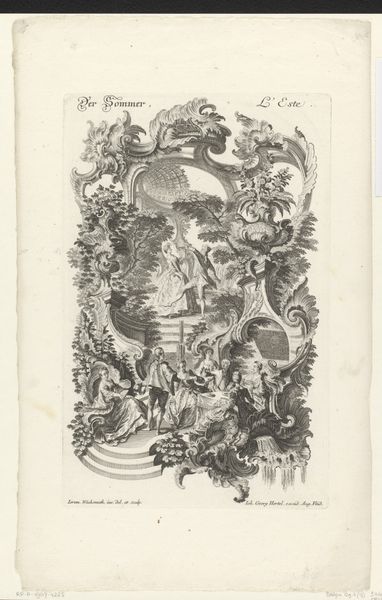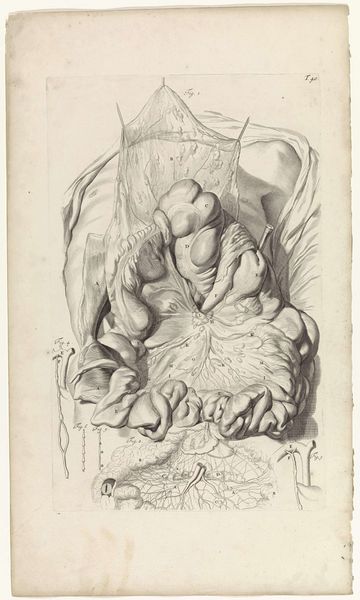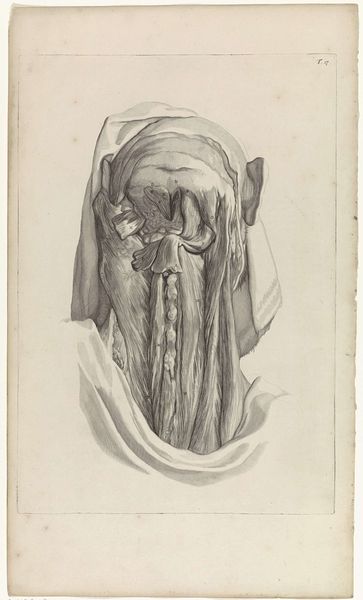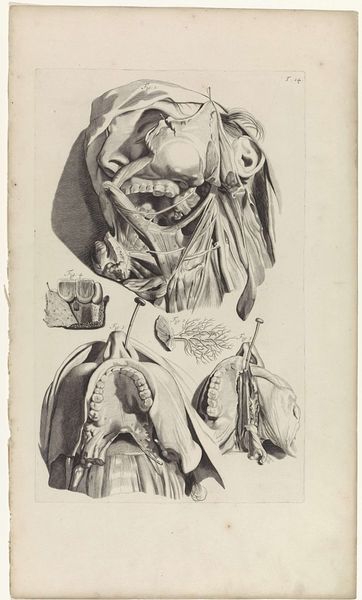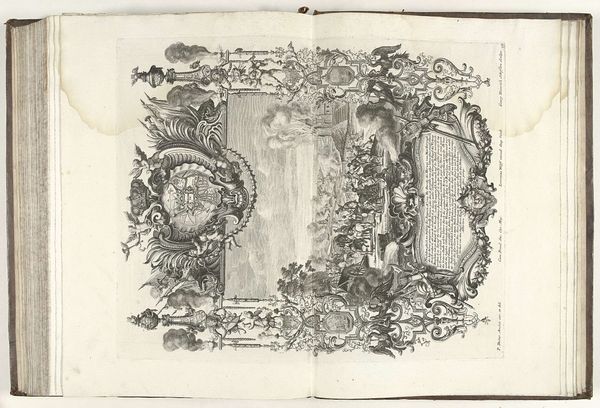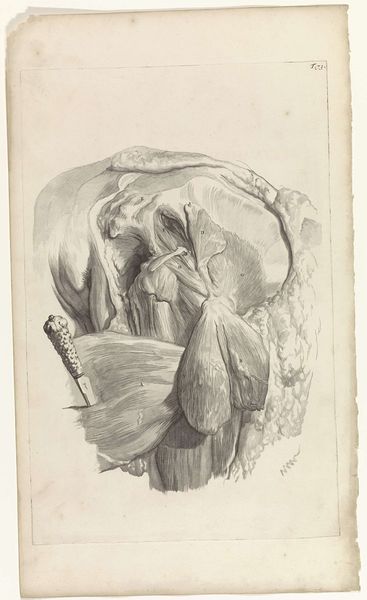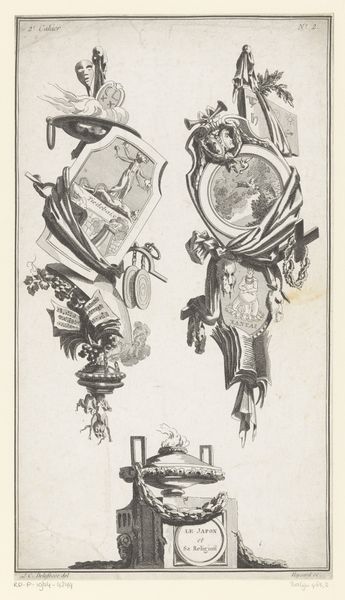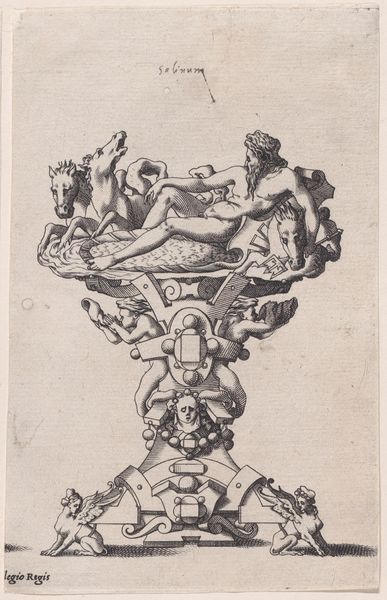
drawing, paper, ink, engraving
#
drawing
#
baroque
#
pen sketch
#
pencil sketch
#
paper
#
form
#
ink
#
line
#
history-painting
#
engraving
#
realism
Dimensions: width 273 mm, height 442 mm
Copyright: Rijks Museum: Open Domain
Editor: This is Pieter van Gunst's "Anatomische studie van de binnenkant van een schedel" from 1685. It's an ink and engraving on paper, currently at the Rijksmuseum. The starkness of the drawing really grabs you; it feels very…clinical, almost like a specimen display. What strikes you about it? Curator: Well, the clinical aspect is important. Let's think about the materials – ink and engraving, meticulously applied to paper. This wasn't simply artistic expression. Consider the labor invested, the precision required. How does this painstaking process challenge our assumptions about "high art" versus technical illustration? Editor: I hadn't thought about it like that. So, it's not just about representing the human form, but about the actual act of representing, the skills involved. Does that have something to do with its baroque style, which I think is about grandeur and flourish? Curator: Precisely. While appearing 'realistic,' look closer at the conventions. This detailed rendering isn't divorced from social context; anatomical studies were part of the scientific revolution, and the availability of this knowledge – often reserved – to a broader audience through prints impacted ideas and material realities surrounding medicine and the body. Editor: So the production of the engraving made the study more widespread and challenged traditional, more constrained distribution? Curator: Exactly. And consider the consumption of these images. Where were they viewed? By whom? How might that viewing experience influence societal beliefs about the body, knowledge, power? These aren’t passive aesthetic objects but part of broader systems of information and control. Editor: I see what you mean. It becomes more than just a picture; it’s a tool, almost a commodity. Thanks, I had no idea of the kind of social role such a drawing could play. Curator: The process and purpose intertwined reveal interesting cultural history.
Comments
No comments
Be the first to comment and join the conversation on the ultimate creative platform.

